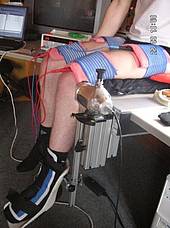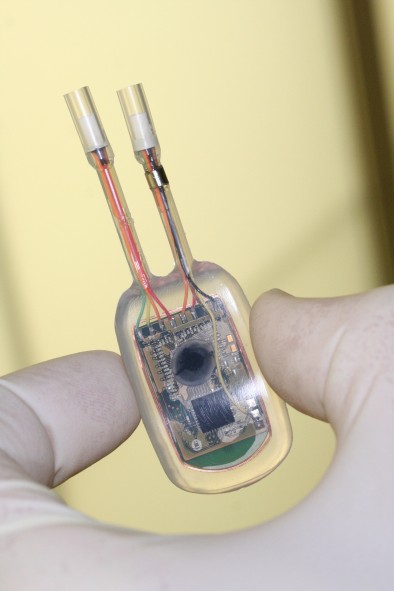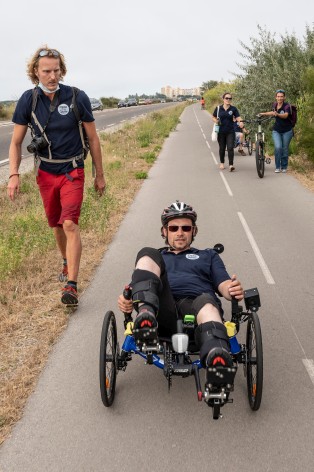Functional electrical stimulation uses short electrical impulses to induce muscular contractions artificially.

The technology can be found in various neuroprostheses, aiming to restore impaired or lost body functions in individuals who have been paralysed due to an injury of the central nervous system (e.g., after an accident, stroke, or due to a neurological disorder). FES is a viable tool in clinical rehabilitation used in many applications such as heart pacing, diaphragm pacing (breathing), bladder control, hand grasping, standing, and walking. Depending on the particular application, stimulation is applied either externally via surface electrodes or internally by specially designed implants. Further, FES allows for muscular training to counteract atrophy and improve force and endurance. In this context, it is also used outside of the purely clinical setting to perform recreational activities like cycling, rowing, or, more recently, swimming.
Neuromuscular Electrical Stimulation (NMES)
Neuromuscular electrical stimulation targets the activation of motor nerves for inducing muscular contractions, which can be used to regain certain functions in otherwise paralysed muscles. It is a complementary method with a long tradition in movement rehabilitation with various applications to counteract muscular atrophy, compensation of hypokinesia and maintenance of muscle mass. Sequential control of different muscle groups allows to coordinate even complex movement patterns which can be used to support therapeutic interventions.
Stimulation of Denervated Muscles

In situations where the nerve supply of the muscle is permanently lost (i.e., denervation), it is still possible to directly stimulate the muscular tissue. Compared to conventional nerve stimulation, this requires much higher energy delivered per stimulation pulse and, consequently, additional safety measures. Nevertheless, it is an essential part of rehabilitation that maintains muscle size and restores certain functionality, which untreated would lead to severe and degenerative processes.
FES-Implants

Some applications require permanent availability of higher demands on selectivity, long-term stability, or aim to increase comfort when applying electrical stimulation. Functionality, lifetime, and size of the implant are specifically tailored to the intended application. Some prominent solutions using FES-implants can be found in heart pacing, phrenic stimulation (breathing), laryngeal muscle stimulation, bladder control, and movement restoration in upper and lower extremities.
FES-Sports

Besides pure rehabilitation, FES can also be used for recreational activities such as cycling, rowing, or swimming. The artificial activation of muscles enables individuals with a spinal cord injury to regain a certain level of physical activity and mobility. Constant technological advances and an increasing understanding of the underlying physiological principles lead to novel systems adapted to and optimized for the individual use-case.
FES as Assessment-Tool

Assessments of residual voluntary and stimulation supported functions after nerve injury are essential for the planning of therapeutic intervention and follow-up monitoring. Electrophysiological recordings, combined with FES, provide valuable information about residual nerve conductivity and motor control after spinal cord injury or peripheral nerve damage.
